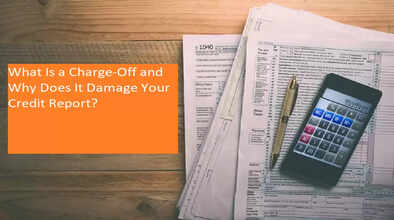What Is a Charge-Off and Why Does It Damage Your Credit Report?

When borrowers fail to make timely payments on loans or credit cards, banks can take one of the most serious actions against them—charging off the account. A charge-off is often seen as the biggest stain on your credit history, and it can remain on your credit report for up to seven years. This single entry can drastically lower your credit score and make it very difficult to access future loans or credit facilities.
What Exactly Is a Charge-Off?
A charge-off happens when you fail to pay your credit card or loan installments for six months or longer. At this point, the bank categorizes your account as uncollectible and writes it off from their books.
However, this does not mean your debt is forgiven. You are still legally obligated to repay the outstanding balance. The bank may continue its collection efforts or sell your debt to a third-party recovery agency. Either way, the charge-off entry becomes part of your credit record, signaling lenders that you defaulted on your obligation.
Why Is a Charge-Off So Harmful?
A charge-off entry is one of the most severe negative marks on a credit report. Here’s how it impacts your financial life:
-
Credit Score Damage – It can cause your credit score to plummet, reducing your chances of approval for future loans or credit cards.
-
Higher Interest Rates – Even if you manage to secure a loan later, lenders will likely charge higher interest rates and impose stricter terms due to your risky profile.
-
Limited Credit Opportunities – Home loans, car loans, or even a new credit card application can get rejected.
-
Long-Term Effect – Unlike minor late payment entries, a charge-off stays on your credit report for seven years. Even if you clear the dues later, the entry will only be updated to show “Paid” or “Settled” but will not be removed.
Can a Charge-Off Entry Be Wrong?
Sometimes, errors happen. The wrong date, incorrect amount, or even an account you never owned can appear on your credit report as a charge-off.
In such cases, you should immediately raise a dispute with the credit bureau (CIBIL, Experian, Equifax, or CRIF). The bureau will investigate, and if your claim is valid, the entry can be corrected or removed.
In rare instances, banks may agree to adjust or remove the entry after a settlement, but this is not guaranteed.
How to Recover From a Charge-Off
While a charge-off is damaging, it doesn’t mean you cannot rebuild your financial standing. Here are some practical steps:
-
Repay Outstanding Dues – Clear your debt as soon as possible to stop further collection activity and prevent the situation from worsening.
-
Make Timely Payments – Ensure that all future bills, EMIs, and credit card payments are made before the due date.
-
Reduce Debt Dependency – Avoid excessive reliance on credit; maintain your credit utilization ratio below 30%.
-
Use a Secured Credit Card – If your credit score is low, applying for a secured card (backed by a fixed deposit) can help rebuild your profile.
-
Monitor Your Credit Report – Regularly check your report for updates and track your score improvement over time.
Final Takeaway
A charge-off is more than just a negative entry—it’s a long-lasting warning signal to lenders that you failed to repay debt. While it does not mean your debt is forgiven, it severely reduces your financial credibility for years.
The best way to protect your credit health is to avoid delinquency in the first place by paying bills on time and keeping debt under control. And if you already have a charge-off on your record, take corrective measures immediately—repay dues, dispute inaccuracies, and rebuild your credit score with disciplined financial behavior.

